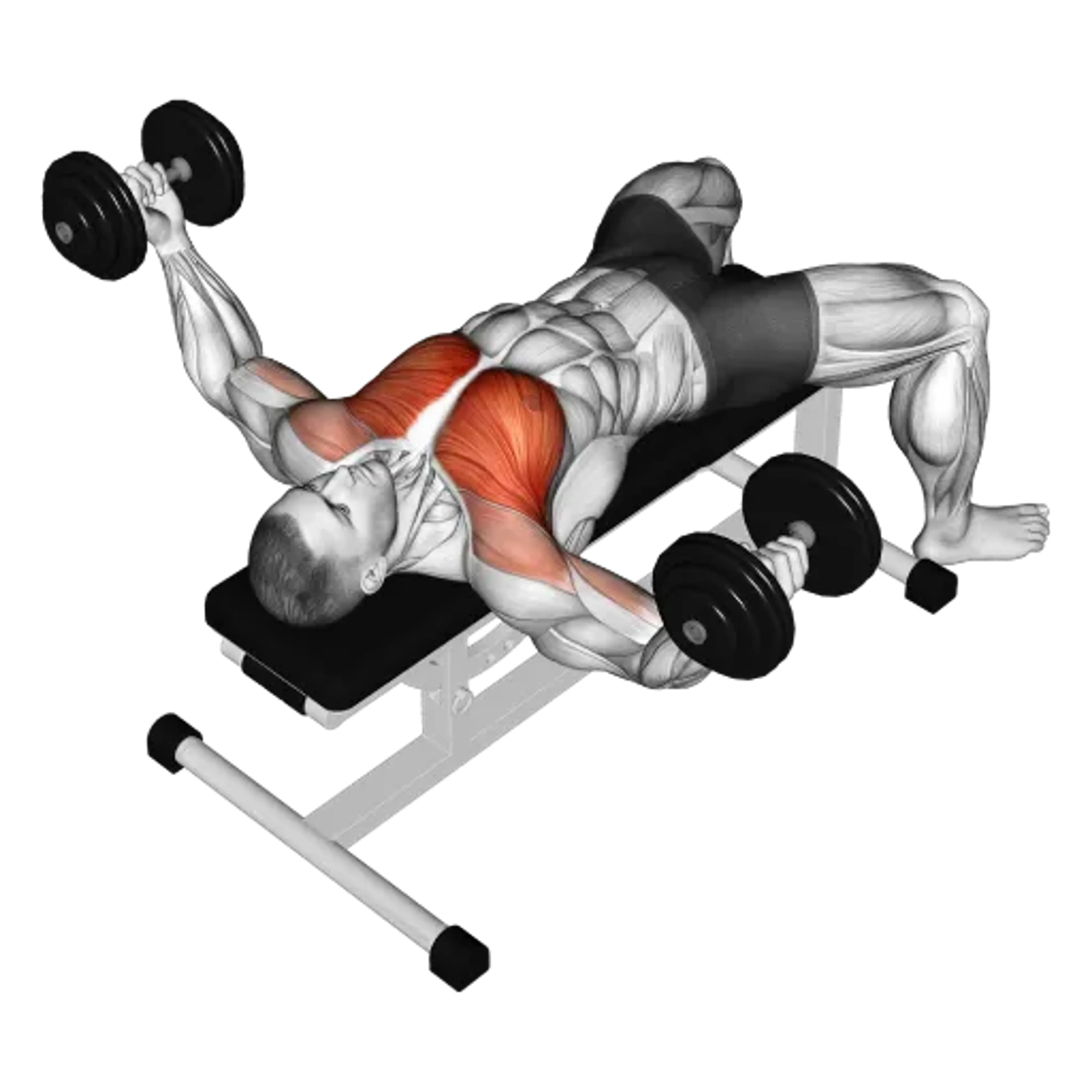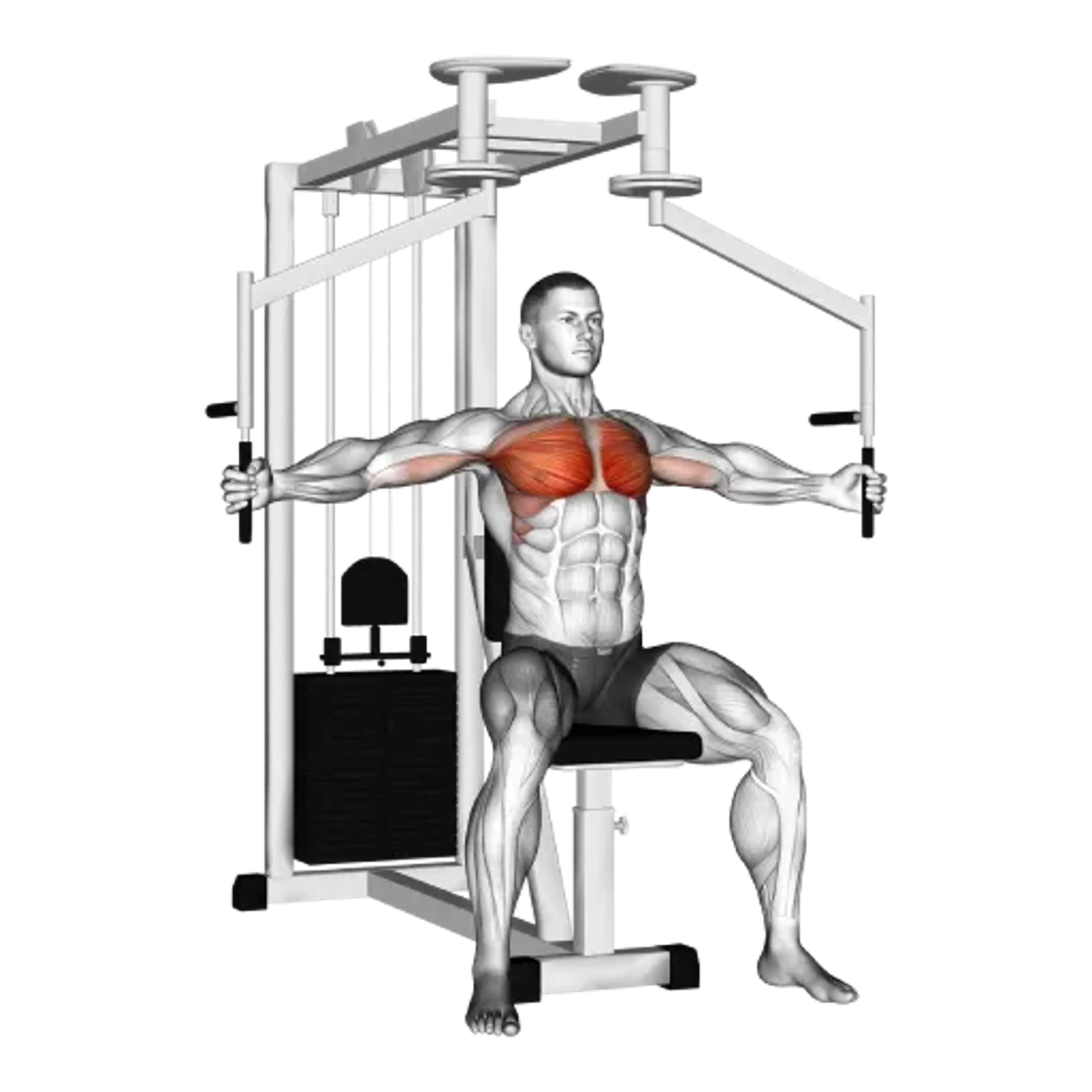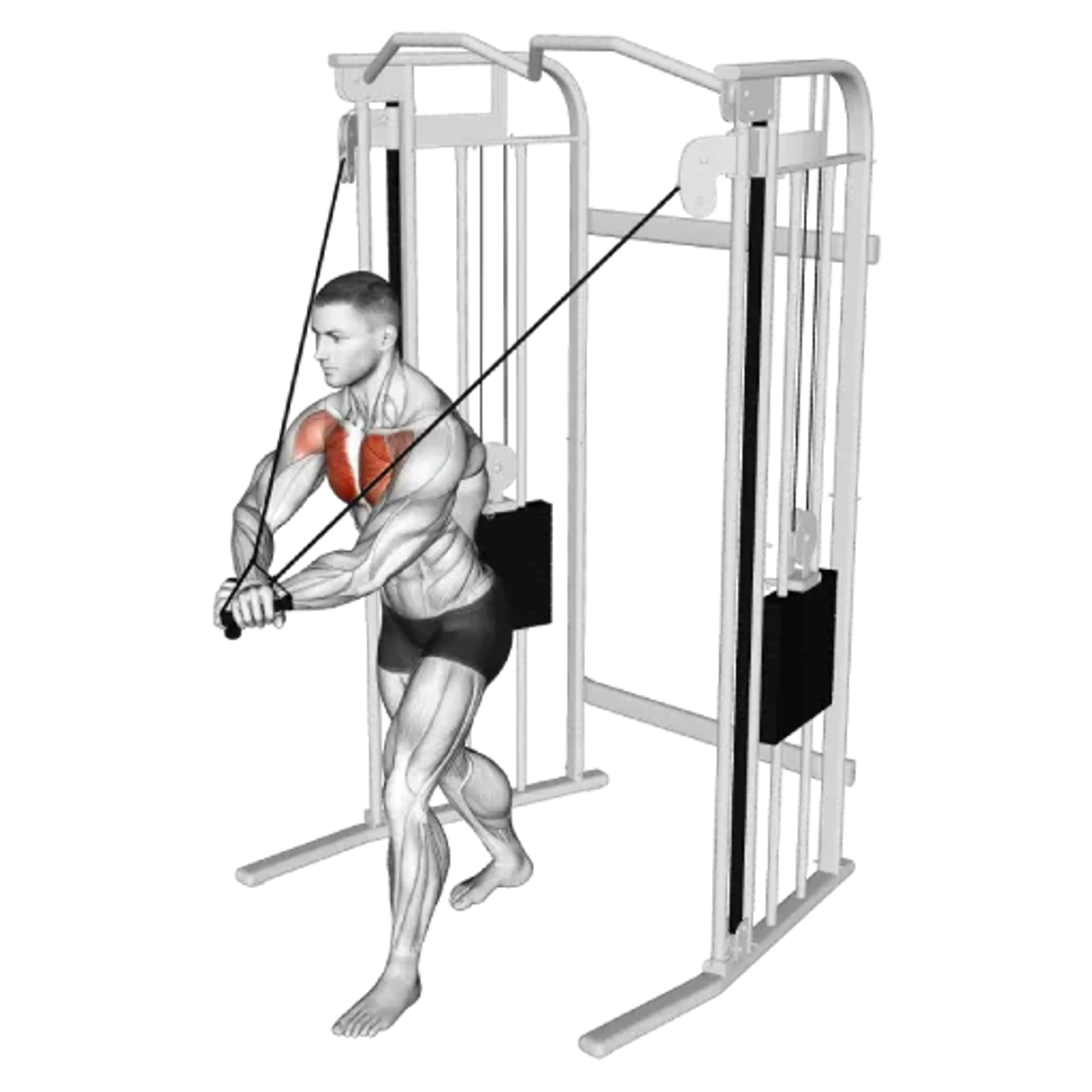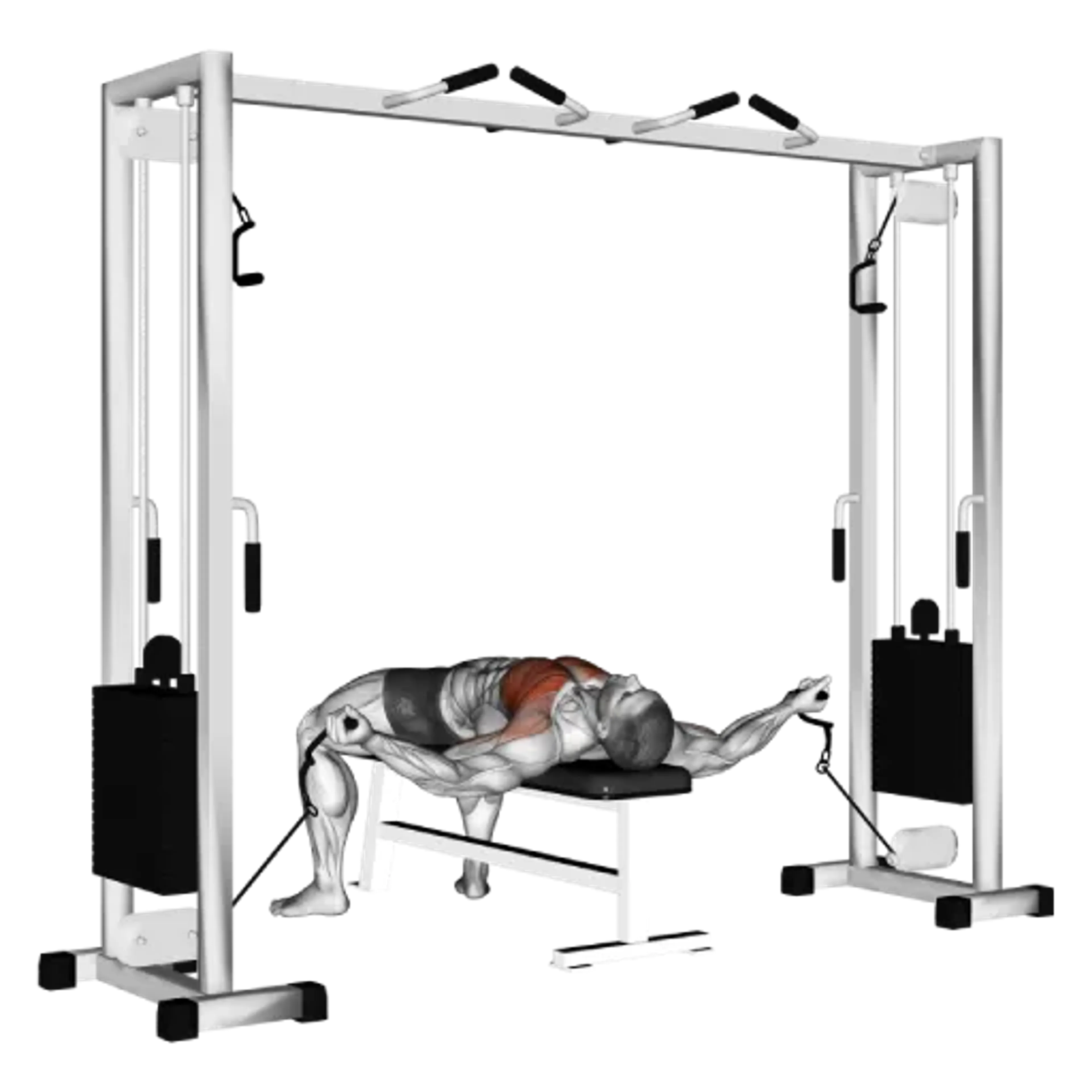Band High Fly
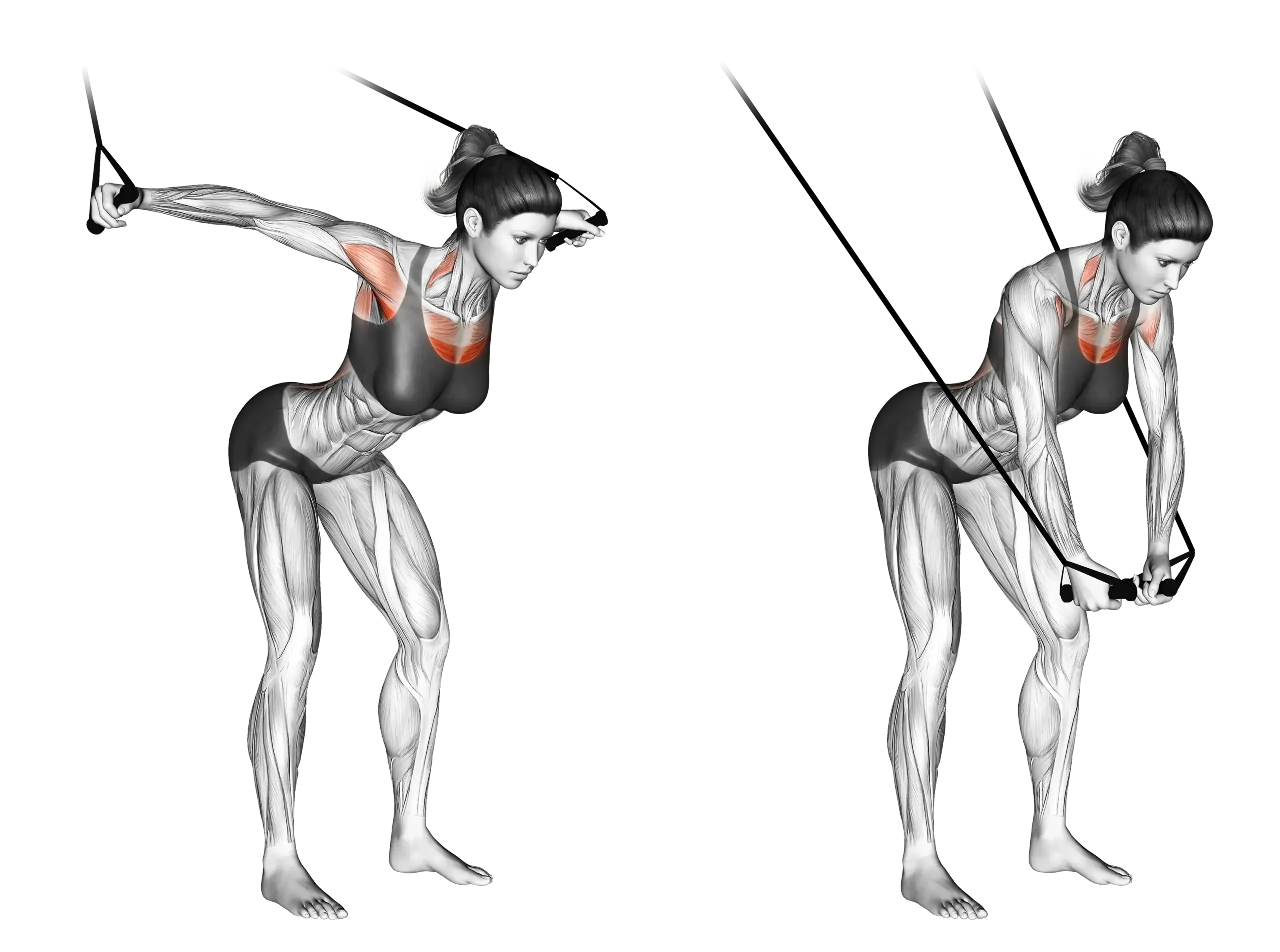
Overview
- Primary Focus:
- Chest.
- Equipment:
- Resistance bands.
- Difficulty:
- Beginner.
General Information
Band High Fly is an isolation exercise that primarily targets the chest and also engages the front shoulders. It is a beginner-level movement that emphasizes the lower and mid-pec fibers by pulling from a high anchor down and in, making it a practical option when cables or machines are unavailable.
Because bands provide accommodating resistance, tension increases as your hands move toward the midline. This makes the exercise joint-friendly and easy to set up at home or while traveling. It works well for hypertrophy, pre-exhaust before pressing, or as a lighter accessory on push days.
A high-to-low path biases the lower chest while still training full horizontal adduction. Keep the elbows softly bent and focus on squeezing through the pecs with a slow, controlled return to stretch the muscle under tension. Expect a strong mind-muscle connection and burn when you keep constant tension and limit momentum.
Use it when you lack a machine or want a longer range than dumbbells allow. Choose the Band Low Fly to shift emphasis up toward the upper chest, or a Cable Fly for a steadier resistance curve when available. Single-arm variations can further improve control and address side-to-side differences.
Muscles Worked
- Pectoralis Major
- Primary
- Deltoid
- High
- Biceps Brachii
- Low
- Rectus Abdominis
- Low
- Serratus Anterior
- Low
Instructions
- Anchor the bands above head height (door anchor or rack) so the line of pull is down and in.
- Grip the handles, step forward to create light tension, and take a staggered stance with soft knees.
- Set shoulders down and back; keep ribs stacked and core braced. Wrists stay neutral.
- Start with arms slightly out to the sides and a soft elbow bend (about 10-20°). Do not turn it into a press.
- Sweep the hands down and in on a wide arc until they meet or nearly meet in front of the lower chest. Squeeze the pecs hard.
- Pause briefly, then return slowly along the same path until you feel a stretch across the chest without slipping into shoulder shrugging.
- Keep elbows softly fixed and shoulder blades controlled; avoid bouncing at end range to keep tension on the pecs.
- Stop a rep or two shy of failure, especially with thicker bands, and build volume across 2-4 sets.
Common Mistakes
Injuries
Band High Fly is a low risk exercise when performed with proper technique.
Common strain points are the front of the shoulder and biceps tendon if you overreach or let the shoulders shrug. Keep elbows softly bent, control the arc, and stay within a comfortable range to protect the joint.
If you feel pinching at the top, lower the anchor slightly, reduce band thickness, or step closer to decrease tension. Prioritize smooth reps with even tension on both sides before increasing difficulty.
Stop if pain persists, radiates, or alters your movement. Regress to lighter bands, reduce range, or use single-arm sets to refine control before progressing again.
Alternative Exercises

Frequently Asked Questions
- Q: How high should I anchor the bands?
Slightly above head height works well for a downward and inward path. Adjust so the hands travel toward the lower chest without shoulder shrugging.
- Q: What rep range is best?
Use 10-20 controlled reps for hypertrophy. Keep constant tension, focus on a 1-2 second squeeze, and a slow 2-3 second return.
- Q: Can this replace cable flyes?
It trains a similar pattern with an easier setup. The resistance curve differs, but it is effective when traveling or training at home; progress by stepping out or using thicker bands.
- Q: How do I progress this movement?
Increase band thickness, step further from the anchor, add a longer pause at peak squeeze, or extend the eccentric by 1-2 seconds.
Overview
- Primary Focus:
- Chest.
- Equipment:
- Resistance bands.
- Difficulty:
- Beginner.
